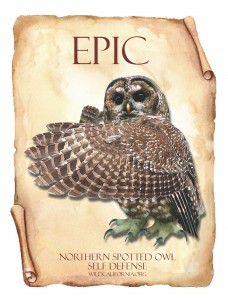The status of the Northern Spotted Owl (Strix occidentalis caurina) will be reviewed under the Endangered Species Act, a decision which could lead to uplisting of the Threatened subspecies to Endangered, a change supported by American Bird Conservancy. “American Bird Conservancy appreciates that the U.S. Fish and Wildlife Service is taking this action to help reverse the Northern Spotted Owl’s spiral toward extinction” said Steve Holmer, senior policy advisor for American Bird Conservancy. Long-term demography studies which make up the federal government’s monitoring program for the species show that in 2013 populations in all eight study areas were in decline and well below historic averages for both total numbers and breeding success. “In the Tyee demographic study area near Roseburg, Oregon, the population has seen a severe drop in the last five years; only 29 owl pairs were found in 2013 compared to 66 pairs ten years ago,” said Holmer. "The number of females nesting has decreased, as has the average number of offspring.” The Tyee researchers concluded that “the last three years of reproduction have been the lowest on record and resulted in the fewest number of young produced.”
Monitoring in northwestern California found that over the past five years, owl detections have decreased 30 percent. In Oregon’s Coast Range study area, the percentage of sites with spotted owl detection has declined from a high of 88 percent in 1991 to a low of 23 percent in 2013. For three consecutive years no sub-adult owls were seen.
The Environmental Protection Information Center (EPIC) submitted a reclassification petition for the northern spotted owl to the U.S. Fish and Wildlife Service on August 15, 2012.
The northern spotted owl primarily inhabits old growth forests in the northern part of its range (Canada to southern Oregon) and landscapes with a mix of old and younger forest types in the southern part of its range (Klamath region and California). The species' range is the Pacific coast from extreme southern British Columbia to Marin County in northern California. It nests in cavities or on platforms in large trees and will use abandoned nests of other species. The northern spotted owl is primarily nocturnal. Its diet consists mainly of wood rats (Neotoma sp.) and flying squirrels, although it will also eat other small mammals, reptiles, birds and insects.
Sources:
American Bird Conservancy, April 7, 2015
http://www.abcbirds.org/newsandreports/releases/150407.html
Wikipedia
http://en.wikipedia.org/wiki/Northern_spotted_owl

- Log in to post comments
